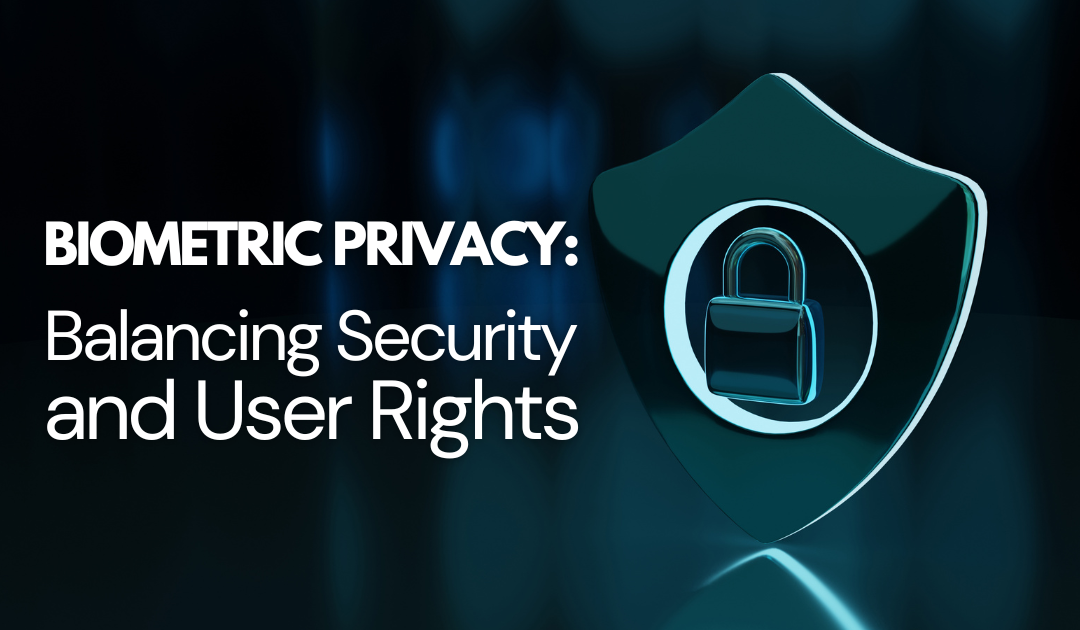In an era where our digital footprints are becoming more expansive and traceable, the conversation around biometric data privacy has surged to the forefront of cybersecurity discussions. Biometrics—the physiological and behavioural characteristics that can be used to digitally identify a person—promise elevated security.
From unlocking smartphones with a fingerprint to boarding an airplane with a facial scan, biometric technology is increasingly woven into the fabric of our daily lives. But as this technology becomes more pervasive, controversy surrounding the topic heightens:
How do we strike the delicate balance between ensuring security and safeguarding individual privacy rights?
Let’s delve into the contours of this critical issue, examining the escalation of biometric technology use, the importance of protecting biometric data, and the steps that stakeholders, including individuals, businesses, and policymakers, can take to foster a safe, respectful approach to biometric data handling.
The Rise of Biometric Identification Systems
Biometric identification systems have become alluring for their promise of unparalleled security and convenience. They leverage unique personal features—your fingerprint, face, iris, voice, and even your gait—that are exceedingly difficult to replicate or steal compared to traditional passwords or PINs. This has propelled the rapid adoption of biometric authentication across sectors, from law enforcement and border control to corporate security and consumer electronics.
Technological leaps have coupled with user enthusiasm for more seamless and integrated experiences, fueling this rapid integration. It’s undeniable that biometrics can streamline identification processes and pose a hurdle for potential hackers, but this innovation also comes at a potential cost that requires keen attention.
Protecting Biometric Data: A Paramount Concern
Unlike a password or a bank card, biometric traits are inherently inseparable from their owners. This is why the security of biometric data is vital to both your organization’s and your end users’ privacy.
The consequences of such breaches can be far-reaching. Stolen biometric data could be exploited for identity theft, unlawful surveillance, and privacy invasions. Also, this data can be immensely valuable to hackers and advertisers to track and profile individuals without their consent, leading to potential abuses that extend beyond the individual to societal harm.
Given these stakes, the need to insulate biometric data against misuse and unauthorized access cannot be overstated. Protection measures have to be robust and evolve with the sophistication of potential threats.
Regulatory Frameworks Ensuring Biometric Privacy
Recognizing the potential for privacy infringement, several jurisdictions have begun to enact laws and regulations that govern the collection, use, and storage of biometric data. The European Union’s General Data Protection Regulation (GDPR) is one of the most comprehensive legislations that enshrines strict guidelines for biometric data as a special category of sensitive personal data.
In the United States, the Illinois Biometric Information Privacy Act (BIPA) stands out as one of the strongest state-level protections, requiring companies to obtain informed consent before collecting biometric data and establishing clear rules on its storage and destruction.
These laws signal the movement towards a legal landscape where the onus is on entities collecting biometric data to ensure transparency and accountability, but they are just the beginning. Different standards and the lack of federal guidelines in the U.S., for instance, mean that there remains a patchwork of protections, creating a complex environment for both consumers and companies to navigate.
Ethical Considerations in Biometric Data Use
Beyond legal compliance, ethical considerations must come into play when dealing with biometric data. This involves grappling with questions about consent, inclusivity, fallibility, and function creep—the notion that once a system is established for one purpose, it will inevitably be put to additional use.
Safeguarding Biometrics Through Enhanced Security Protocols
To mitigate the risks inherent in handling biometric data, adopting heightened security protocols is fundamental. Advanced encryption methods, rigorous access controls, and secure storage solutions form the bedrock of data protection strategies.
End-to-end encryption should protect biometric data from the point of capture throughout its lifecycle, ensuring that raw biometric data is never exposed or transmitted in an insecure manner. Limiting access to biometric databases to authorized personnel only, and employing multi-factor authentication for such access further layers the defense against unauthorized intrusions.
Navigating Trust and Innovation
Amidst the rapid integration of biometric technology, striking a balance between security advancements and individual privacy rights is an ongoing challenge. While the potential of biometrics is undeniable, users, companies, and governments must proceed cautiously to safeguard sensitive information. Establishing regulatory clarity, prioritizing ethical considerations, and implementing robust security protocols are not just defensive measures; they are fundamental to building trust in transformative biometric systems. As technological innovation accelerates, preserving values of privacy and individual rights is crucial to ensuring that biometrics contribute positively to society. Staying informed and engaged is vital for consumers, policymakers, technologists, and advocates alike, as we collectively shape a future where security and fundamental rights coexist harmoniously.
Securing the Future with AI-Powered Biometric Access Control
Learn how Suprema’s expertise in biometric access control technology is enhanced by the power of Artificial Intelligence (AI).

